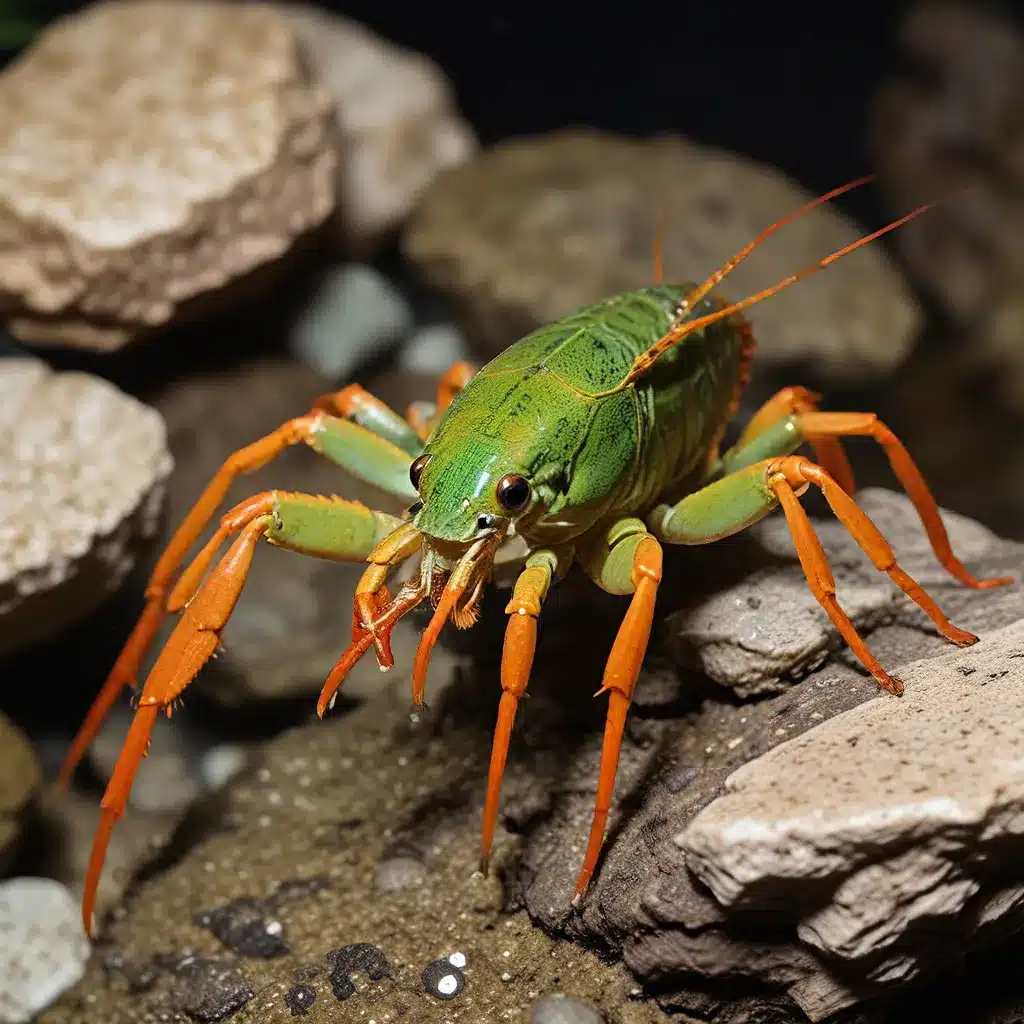
Exploring the Vibrant World of Cherax Crayfish
Cherax crayfish are renowned for their stunning colors and intricate patterns, making them a captivating addition to any aquarium. These freshwater crustaceans display a wide range of hues, including vibrant reds, blues, oranges, and greens. With their elongated bodies and impressive claws, Cherax crayfish are true showstoppers, often exhibiting territorial tendencies and unique social interactions.
One of the most remarkable Cherax species is the Blue Lightning Striped Crayfish (Cherax misolicus). Newly discovered and native to Papua New Guinea, this rare crayfish is one of the largest freshwater crayfish available. It boasts a stunning pastel color palette, with distinct blue, orange, white, and green hues, as well as a beautiful blue striping pattern on its tail. The Blue Lightning Striped Crayfish is known for its ease of breeding in the aquarium, although the fry grow at an extremely slow pace.
Another captivating Cherax species is the Thunderbolt Crayfish (Cherax pulcher), also known as the Pink Coral Freshwater Lobster. This newly discovered and extremely rare crayfish, native to the Hoa Creek of Western Papua New Guinea, boasts a remarkable eclectic coloration. Deep blue, hot pink, emerald green, orange, white, and black are all distinctly displayed on the top specimens, making this crayfish one of the most uniquely colored freshwater crayfish in the world.
To provide optimal care for Cherax crayfish, it is essential to recreate their natural habitat in the aquarium. These crayfish thrive in well-filtered tanks with plenty of hiding places, such as rocks and caves. As omnivorous feeders, Cherax crayfish should be provided with a balanced diet consisting of high-quality pellets, fresh vegetables, and occasional protein-rich treats. Regular water testing and maintenance are crucial to ensure the well-being of these captivating crustaceans.
Exploring the Hardiness of Procambarus Crayfish
In contrast to the vibrant Cherax crayfish, Procambarus crayfish are known for their hardy nature and adaptability. These freshwater crustaceans come in various colors, including shades of brown, green, and blue, and are recognized for their robust claws and segmented bodies.
One stunning Procambarus species is the White Specter Crayfish, a beautiful white variant of the Electric Blue Crayfish (Procambarus alleni). This crayfish, also known as the Vanilla Crawfish or Vanilla Lobster, originates from the Southeastern United States and is known for its incredible red, white, and blue coloration. The top of the crayfish is usually a dark midnight blue, while the head, tip of the tail, and claws are scarlet red, and the belly, tail, and legs are a milky white with some red highlights.
Another captivating Procambarus species is the Orange Ghost Crayfish, which boasts a stunning orange and white marbled pattern. These crayfish are known for their active nature, spending plenty of time exploring the aquarium floor in search of food.
When caring for Procambarus crayfish, it is important to provide them with an environment that mimics their natural habitat. They require a spacious tank with hiding places, such as caves, rocks, and driftwood. As omnivorous feeders, Procambarus crayfish will consume a wide range of foods, including pellets, algae wafers, vegetables, and even small live prey. Regular water quality checks and filtration maintenance are essential to keep these hardy crustaceans healthy and thriving.
Embracing the Charm of Mexican Dwarf Crayfish
In addition to the vibrant Cherax and hardy Procambarus crayfish, the Mexican Dwarf Crayfish (Cambarellus patzcuarensis var. orange), also known as CPO crayfish, offer a captivating charm to aquarium enthusiasts. These small-sized crustaceans are typically orange or reddish in hue, and their diminutive size adds to their allure.
Unlike their larger counterparts, Mexican Dwarf crayfish are known for their peaceful and docile nature, making them suitable for community aquariums. Their beautiful and eye-catching fiery orange coloration will undoubtedly add a burst of color to any tank. Additionally, these dwarf crayfish are relatively easy to care for, requiring a well-planted aquarium with plenty of hiding spots and moderate water flow.
When it comes to feeding, Mexican Dwarf crayfish are omnivorous, readily accepting a varied diet that includes sinking pellets, frozen or live foods, and blanched vegetables. Maintaining stable water parameters and providing a peaceful community environment are key to their well-being.
Considerations for Choosing the Right Crayfish Species
When selecting a crayfish species for your aquarium, there are several factors to consider. Evaluate the tank size and compatibility with other tank inhabitants, as some crayfish species are more aggressive and territorial, while others are more peaceful. Additionally, research the specific care requirements, including water parameters and diet, to ensure you can provide the necessary conditions for the crayfish to thrive.
Crayfish, including Cherax, Procambarus, and Mexican Dwarf species, are fascinating creatures that can add beauty, interest, and a unique charm to your aquarium. By understanding their distinct needs and providing appropriate care, you can create a thriving environment for these captivating crustaceans and enjoy their presence in your aquatic world.
Remember, when setting up your aquarium, consider incorporating high-quality filtration, appropriate substrate, and lush aquascaping to create a visually stunning and biologically balanced ecosystem. By prioritizing the well-being of your aquarium inhabitants, you can unlock the full potential of your underwater oasis and cultivate a truly captivating aquatic environment.
For more information and expert advice on aquarium care, be sure to explore the wealth of resources available on King Aquarium, your go-to destination for all things aquarium-related.

